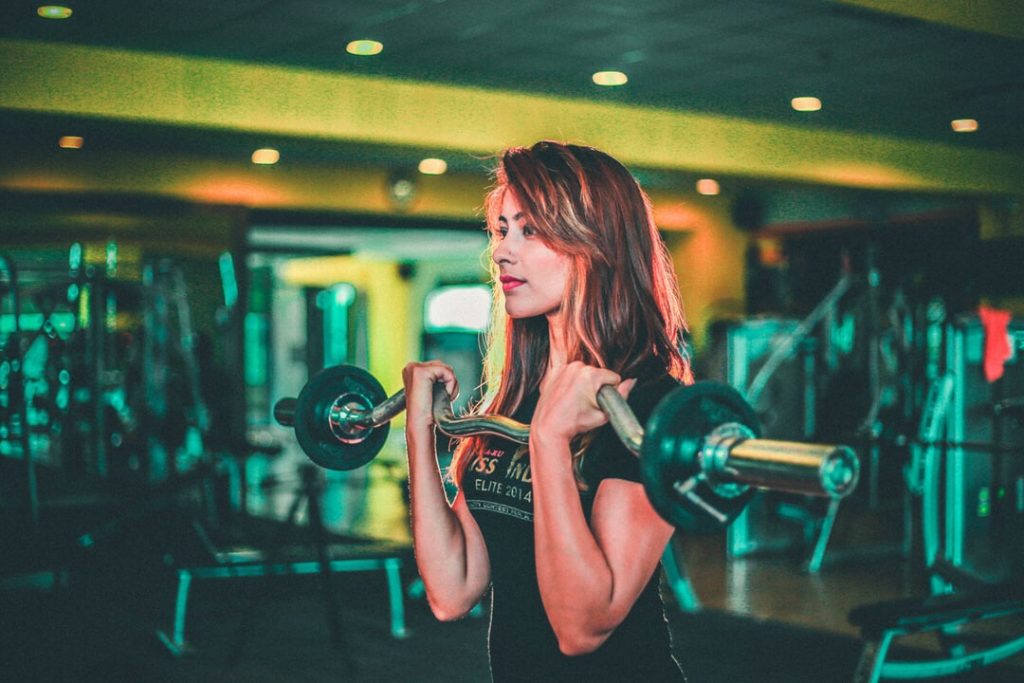
If you needed to work on your balance, standing on one leg, say for 30 seconds, is a good exercise. A good cue would be to imagine your stance leg as a wood post, or that you cement your foot into the ground. Besides helping improve your balance, the muscles of the lower leg play a role in helping you stand on your leg. An exercise like this, standing on one leg, offers a practical carryover to a real-life situation where you just might need to be strong on one leg. A goal of strength training is not only to improve strength, but also to improve function and prevent injury.
The barbell or dumbbell bicep curl is an arm strengthener, common in resistance training. The action involves elbow flexion, or bringing the hands toward the face. Most people stand with their feet side-by-side, or parallel, to perform them. Front-loaded exercises, like the barbell biceps curls, shift the body’s center of gravity forward, outside of your base of support. What typically ends up happening is that most people sway their trunk backward to counter the added weight in front of them, lose their postural control and end up stressing the lumbar spine.
It’s always a good idea to limit compressive forces on the back. Research shows that having weights alongside the body, rather than held out front of the body at shoulder height, is much more spine-friendly.
If you think about daily activities, such as lifting a big UPS package, or carrying something in front of you, most people would lift or stand in a staggered stance, as it is more stable. As training is meant to improve function, it makes sense to train in positions that mimic real life, not just a single muscle.
As we age, it becomes even more important to train not just muscle, but movement. Countering muscle disuse through resistance training is a powerful intervention to combat the loss of muscle strength and muscle mass. Independence, mobility, psychological well-being and healthy life expectancy are all benefits.
Lifting groceries or a basket of laundry requires not only strength and mobility, but also good postural control, much like the front-loaded bicep curl. What foot position would give you a larger base of support so you don’t fall? What foot position would give you better stability and balance when doing tasks such as lifting?
Getting back to the bicep curl, the question of which stance was better—parallel or staggered—was recently addressed by two studies at the National Strength and Conditioning Association national conference. The studies showed that the staggered stance provides a bigger base of support anteriorly. Keep in mind that any front-loaded exercise, like the bicep curl, shifts the body’s
